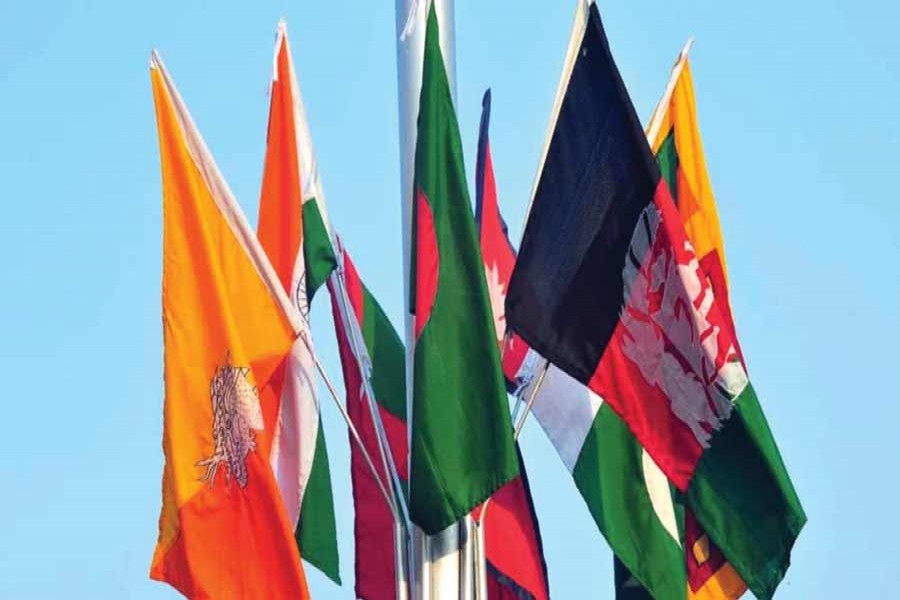
Published :
Updated :

The South Asian Free Trade Area (SAFTA) was signed on January 06, 2004 during the 12th South Asian Association for Regional Cooperation (SAARC) Summit in Islamabad and was effective after January 01, 2006. Among the members was an important and apparent realisation regarding the vital importance of intra-SAARC trade. This dream was the SAFTA. The purpose of this dream was to make it the South Asian counterpart of North American Free Trade Agreement (NAFTA).
Alongside a regional preferential trade agreement (PTA), the member states of SAARC were exploring the options of bilateral trade agreements. As a result of this exploration the India-Sri Lanka free trade agreement (FTA) was signed in 1998. Additionally, the Pakistan-Sri Lanka FTA was signed in 2002. Perhaps, similarities can be drawn with the Uruguay rounds where the member countries of the General Agreement on Tariffs and Trade (GATT) were negotiating for bi-partisan PTAs alongside the negotiations of the world Trade Organisation (WTO). The binding factor in both cases is the apprehension of the member parties regarding the effectiveness of the larger trade agreement, namely WTO or SAFTA. Similar to the trend of difference between WTO concessions and concessions in most PTAs, these bilateral deals in theory offers better prospects than what the SAFTA does. Besides direct trade effects and administrative complications of these bilateral PTAs among the member states of the SAFTA, member states are likely to raise the institutional challenge that PTAs raise for the WTO. Member states are likely to hinder and weaken the trade liberalisation framework of the SAARC in the same way that many observers believe that PTAs hinder and weaken the WTO.
SAFTA's aim is to establish a smooth mechanism for cross-border goods movement between individual regions by eliminating trade barriers. SAARC's initiative, patterned like the European Union (EU), is to create free trade without obstacles, free travel without visa requirements, and establish common currency and defences for member states. Organisations established by South Asian citizens influenced SAARC's formation. Its formation combines their innovative ideas to develop regional trade. However, these governments fail to implement SAARC goals. Additionally, the lasting conflict between India and Pakistan prevents regional integration and cooperation. Suspicions persist and cast doubt on SAARC's effective performance. Countries with smaller economies, like Pakistan, come together because of India's dominance. India is circumspect of neighbouring countries' unity. Despite favourable conditions, South Asian countries lag in intra-trade business achievement.
If Pakistan-China border trade is successful like NAFTA and the EU ensures trouble-free, fast, and free movement of goods and services, then is the same possible for SAARC? While intra-EU trade has a 70 per cent success rate and the Intra-NAFTA trade a 50 per cent success rate, the Intra-SAARC trade can achieve only a 5.0 per cent success rate (World Merchandise Exports of RTAs by Destination in 2015). According to World Bank estimation, annual India-Pakistan trade is approximately US$ 1.0 billion. However, eliminating trade barriers could result in an increase up to US$ 9.0 billion. The Asian Development Bank Institute indicates that 34 years after SAARC's establishment, it negatively affects intra-trade business. This is evident from the 4.23 per cent decrease ratio in grouping's global business (Source ADB report 2014). The WTO identifies South Asia as the world's least integrated region corresponding with other regional trade agreements (RTAs).
To progress, the South Asian intra-trade system states must look beyond SAARC framework to alternatives like bilateralism and sub-regionalism. In 2014, Indian Prime Minister Narendra Modi endorsed this idea at the 18th SAARC Summit held in Kathmandu. Modi recommended that South Asian countries' unification should be expanded through or beyond SAARC, between all or some of the regions. SAARC development should succeed because of history and culture, which creates bonds between South Asian citizens. Unfortunately, SAARC fails to impact social, economic, or cultural aspects. Regional organisations should target and observe some core objectives and take measures to address the prevalent distrust and mistrust obstructing overall growth and integration. Additionally, lack of political determination of officials and leaders defeated unification.
Economic development in different parts of states may be asymetric because of substantial social and geographical gaps. These gaps can cause higher transportation costs, decrease inter-connection, and cause strong institutional differences. Unified economic methods will improve lagging and peripheral parts of states. Escalating intra-regional trade is not a new idea. However, the expectation is SAARC will remain an adhesive unified economical procedure. This expectation is due in part to intra-SAARC trade's limited performance compared to trade within other regional blocs. Performance may improve through the WTO initiative to develop the trade system between SAARC states through regulations and governmental policies. It is necessary to identify obstructions and possible assistance for trading within SAARC.
SAFTA's proper application increased South Asian intra-regional trade more than US$ 2.0 billion. The ratio of intra-regional trade is less than 5.0 per centwell below East Asia's 32 per cent (Source UNCTAD 2008). SAFTA trade remains the lowest among RTAs because South Asian countries are more willing to trade with the US or EU. Nevertheless, South Asia took a step towards unifying the rest of Asia.
SAARC was established to achieve the goal of intra-trade of US$ 100 billion. To achieve this, the member states are required to act towards forming an eventual customs union (CU) through removing tariffs, non-tariff barriers to trade (NTBs), complex sensitive lists, and adopting a common external tariff (CET). They are required to give inspiration to value chains, textile, and clothing value chains, uphold intra-region investments, improve connectivity-financial trade, define the scope of economic corridors formation, encourage service trade, and resolve the India/Pakistan dispute through regularising their trade relationship. Through a CU, South Asia's prospective trade will outshine the performance of others in the region.
Dr. Syed Neyamul is Joint Commissioner of Customs & VAT
NBR, IRD, Ministry of Finance.
drneyam@gmail.com


 For all latest news, follow The Financial Express Google News channel.
For all latest news, follow The Financial Express Google News channel.